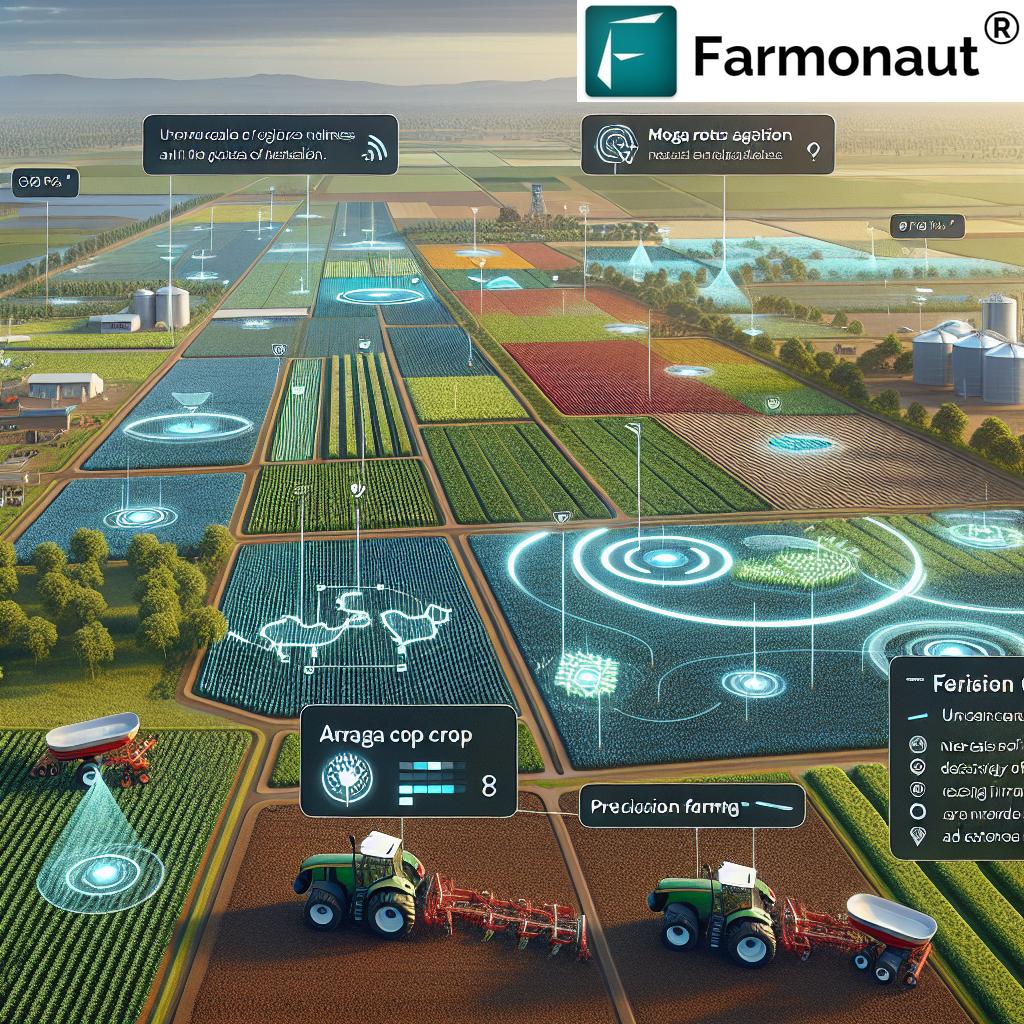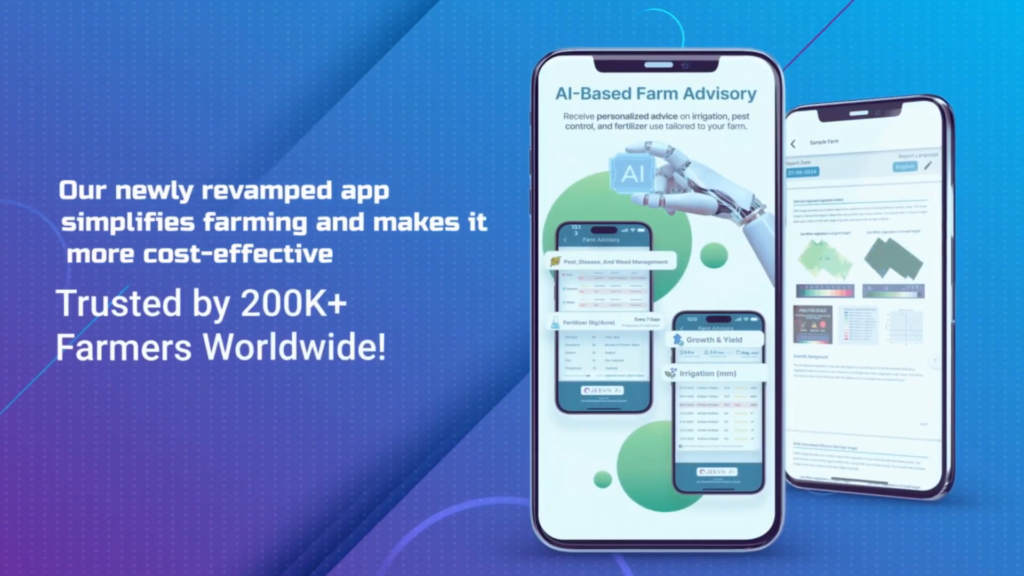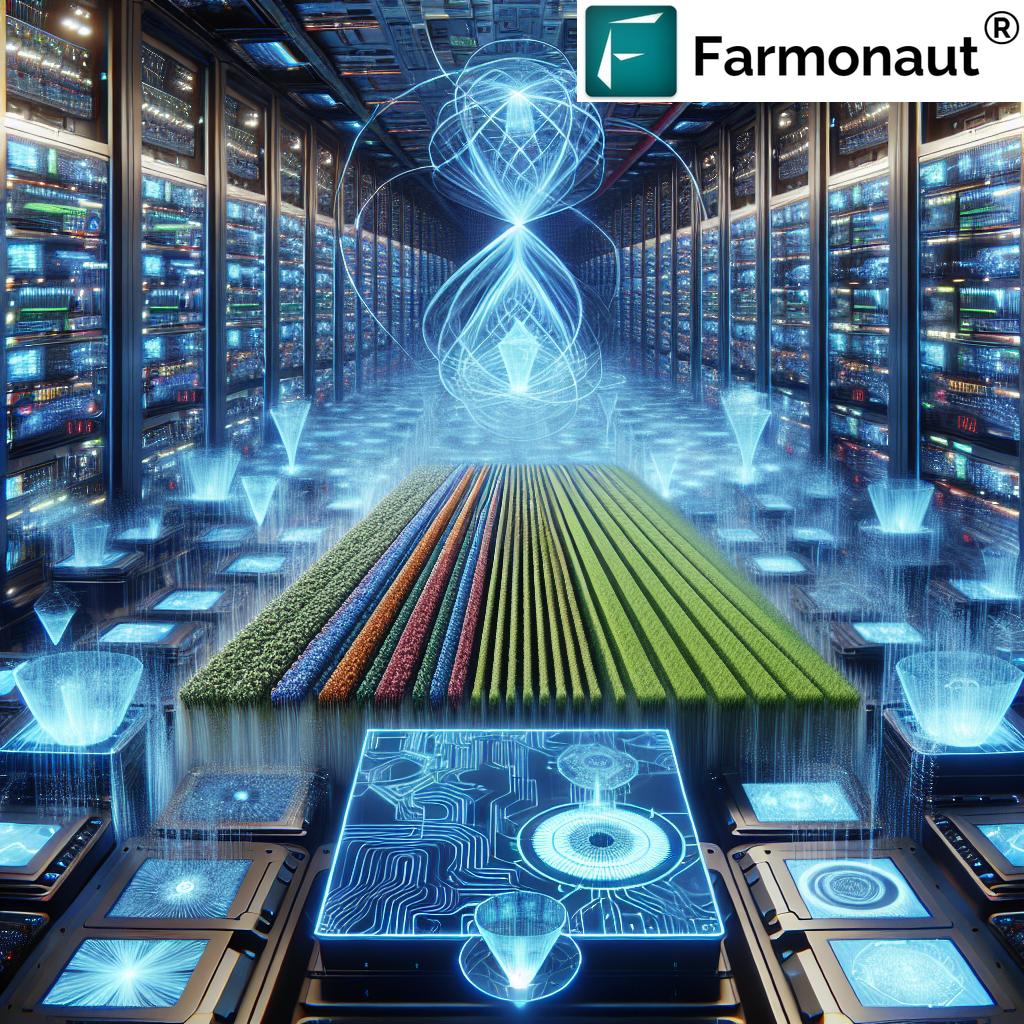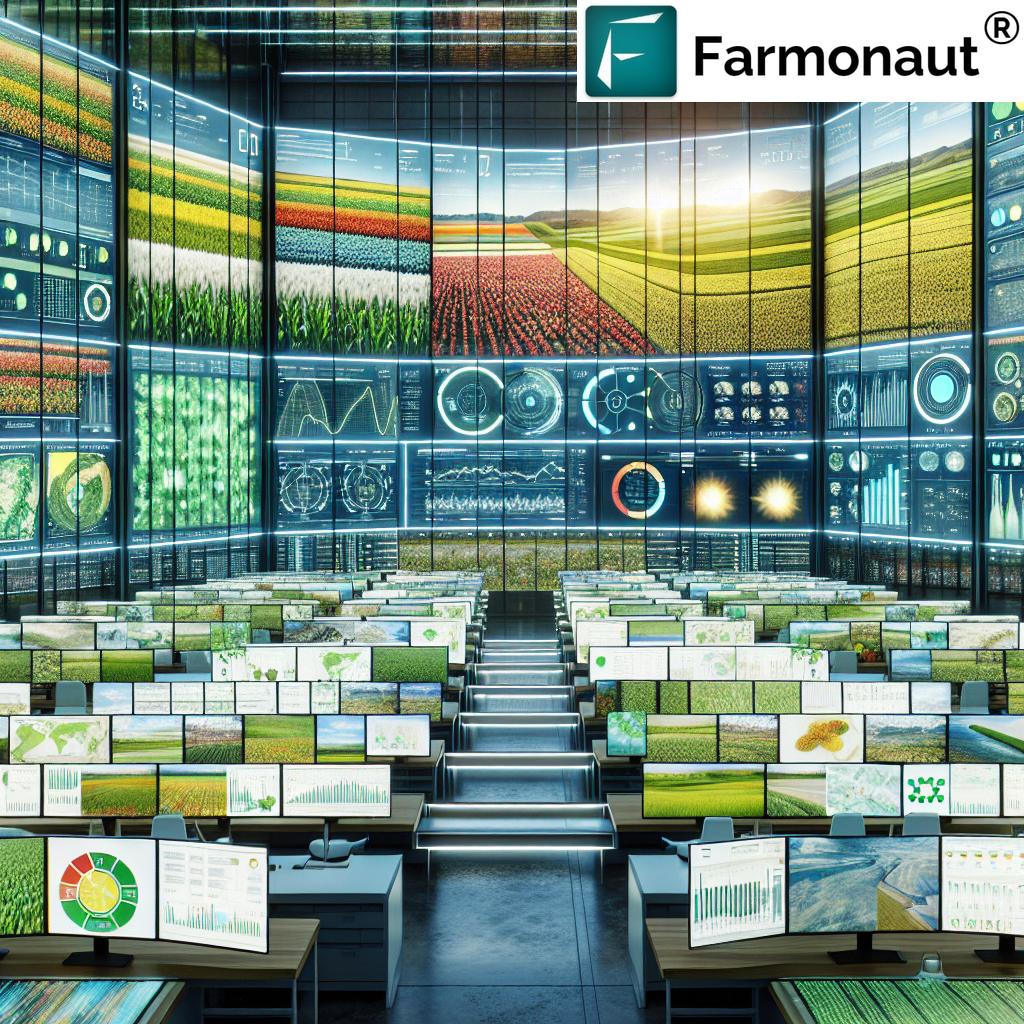Table of Contents
- Introduction: Technology Advancing Agriculture in 2025
- Advantages of GPS in Agriculture
- Disadvantages of GPS in Agriculture
- Advantages of Urban Agriculture
- Disadvantages of Urban Agriculture
- Advantages of Tractors in Agriculture
- Disadvantages of Tractors in Agriculture
- Comparative Feature-Impact Table: GPS, Urban, Tractors
- Video Showcase: Precision Agriculture & Smart Solutions
- How Farmonaut Powers Technology-Driven Agriculture
- Farmonaut’s Subscription Solutions
- FAQ
- Conclusion: The Future of Modern Agriculture
“By 2025, GPS-guided tractors can reduce fertilizer use by up to 15%, significantly cutting input costs and waste.”
Advantages & Disadvantages of GPS, Urban, Tractor Agriculture: Technology’s Impact on Farming, Sustainability, & Efficiency in 2025
In the rapidly evolving landscape of modern agriculture, innovative technology plays a pivotal role in enhancing productivity, sustainability, and efficiency. The exciting fusion of smart tools and novel systems is no longer a vision—it’s the reality of 2025 and beyond.
Among a diverse array of advances, three transformative elements stand out: the Global Positioning System (GPS) in agriculture, urban agriculture, and farm mechanization using tractors. Each of these shapes the future of farming, creating new possibilities for farmers, city communities, and sustainable growth across the globe.
This blog provides a comprehensive, data-driven exploration of the advantages and disadvantages of GPS in agriculture, the merits and challenges of urban farming, and the critical role of tractors in future-ready agriculture. We’ll evaluate each technology’s 2025 impact, using focus keywords while keeping engagement and readability high.
Advantages of GPS in Agriculture: Revolutionizing Precision in 2025
Few innovations have had as far-reaching an impact as the deployment of GPS technology in agriculture. The advantages of GPS in agriculture are defining a new era, with profound implications for food systems, resource management, and farm productivity worldwide.
What is GPS in Agriculture?
The Global Positioning System (GPS) harnesses satellite-based navigation and positioning to enable precision farming. By pinpointing exact locations on the field, GPS empowers farmers to map fields, monitor yields, and conduct soil sampling with unprecedented accuracy. When integrated with farm machinery, it automates planting, spraying, and harvesting, taking both efficiency and sustainability to new heights.
Key Advantages of GPS in Agriculture
- Unmatched Precision in Field Operations: By using GPS, farmers can optimize equipment paths when planting, fertilizing, and harvesting. This reduces overlaps and missed spots, thereby increasing efficiency and minimizing wasted resources.
- Efficient Soil and Yield Mapping: GPS allows mapping fields for soil sampling and tracking variations in crop yields across plots. The result? Targeted application of fertilizers and better resource allocation.
- Reduced Input Costs and Environmental Impacts: By applying inputs like fertilizers and pesticides only where needed, GPS-guided systems reduce costs, minimize environmental impacts, and maximize outputs.
- Real-Time Machinery Tracking: Integrated GPS lets managers track farm equipment in real time, improving logistics and reducing the risk of misplaced assets.
- Enhanced Farm Management & Planning: Real-time data enables better land use planning, resource allocation, and monitoring throughout the season, reducing human error and labor demands.
- Automated and Precision Farming: With smart tractors and implements—often equipped with GPS—automation can handle complex tasks, further decreasing labor costs and delivering consistent results.
- Data-Driven Decision-Making: The continuous flow of geospatial data supports AI-based advisory systems like Farmonaut’s API, enabling customized advice for farmers.
As outlined, the advantage agriculture sector draws on GPS for higher productivity, lower costs, and reduced waste, all crucial for sustainability in our modern era.
Concrete Examples of GPS Advantages in 2025
- Farmers in India and the US report up to 20% less resource waste thanks to satellite-guided seeders and sprayers.
- Crop yield monitoring now enables annual optimization—fields are divided into precisely measured sectors, each managed according to satellite-derived data.
- Reduced fuel consumption by farm vehicles, as efficient routes are mapped—minimizing tractor “idle time” and unnecessary overlap.
Farmonaut’s carbon-footprinting system is a compelling use case: it integrates satellite data for real-time emissions tracking and resource management, enabling compliance and environmental sustainability for 2025 and beyond.
Disadvantages of GPS in Agriculture: Key Challenges to Consider
Despite the remarkable advantages of GPS in agriculture, it is equally important to examine the disadvantages of GPS in agriculture. No technology is perfect, and understanding the potential pitfalls is vital for real-world, resilient farm management.
Major Disadvantages of GPS in Agriculture
- High Initial Setup Costs: Advanced GPS equipment and compatible machinery represent a significant investment. For small-scale and resource-constrained farmers in developing regions, costs may remain a barrier, leading to technological disparity.
- Signal Disruptions and Coverage Issues: GPS signals can be unreliable due to satellite interference, poor satellite coverage, or unpredictable weather conditions—especially prevalent in remote or forested areas.
- Dependency on Technology: Persistent use may result in a degradation of traditional skills and farmer judgment, potentially causing difficulty when technology fails.
- Maintenance and Upgrades: Hardware and software updates are needed periodically, adding to the costs and management complexity.
- Data Privacy & Cybersecurity: With large volumes of farm data stored digitally, security threats and concerns over sensitive data may increase in importance.
The balance between technology benefits and costs—both in financial and knowledge terms—remains a core issue in 2025 as agricultural systems worldwide strive for inclusivity and resilience.
Farmonaut mitigates many of these hurdles by democratizing access to affordable satellite-based solutions for agriculture, mining, and infrastructure. Our tools, accessible via the Farmonaut web and mobile app, put the power of real-time, AI-enhanced geospatial data in the hands of farmers, businesses, and governments.
“Urban farms using smart GPS tech can boost crop yields by 30% compared to traditional small-scale city plots.”
Advantages of Urban Agriculture: Innovative Food Systems for Growing Cities
The concept of growing food within cities has moved from boutique hobby to mainstream strategy. Urban agriculture now stands as a highly sustainable, resilient solution for food security in 2025 and beyond. But what precisely are the advantages of urban agriculture?
Core Advantages of Urban Agriculture in 2025
- Food Security & Local Resilience: Urban farming brings fresh produce closer to consumers, reducing reliance on extended supply chains. This makes cities more resilient to disruptions caused by climate, transportation, or political problems.
- Reduced Carbon Emissions: With production located near or within population centers, the need for long-distance transportation is significantly reduced, cutting carbon emissions and food spoilage.
- Efficient Use of Urban Spaces: Vertical farms, rooftop gardens, and community plots maximize food production in areas where land is at a premium.
- Community Engagement and Local Economies: Urban agriculture promotes community involvement, skill development, and supports local economies.
- Environmental Sustainability: The adoption of circular systems—like using organic waste for fertilizer—turns cities into living labs for sustainable agriculture.
- Improved Urban Environment: Urban green spaces help reduce heat island effects, improve air quality, and enhance mental well-being.
- Educational Opportunities: Urban agriculture provides practical, hands-on education about food systems, nutrition, and sustainability for all age groups.
Crucially, the advantages of urban agriculture integrate with broader urban planning goals for healthy, vibrant, and sustainable cities.
For large cities investing in smart agriculture, platforms like Farmonaut’s large scale farm management app offer robust solutions for satellite-guided site selection, yield tracking, and resource distribution—empowering urban policymakers and local food champions.
Disadvantages of Urban Agriculture: Limitations & Cautions
While urban agriculture offers many advantages, it is not without challenges. Understanding the disadvantages is crucial, particularly as more cities embrace these models in 2025.
Main Disadvantages of Urban Agriculture
- Limited Space and Scale: Space in urban areas is limited, so large-scale production is rarely feasible. Most urban farms supplement rather than replace rural agriculture.
- Potential for Soil and Water Contamination: Some city environments pose risks from polluted soils, water runoff, or airborne pollutants.
- Resource Intensity: Urban systems often require high-tech solutions—such as artificial lighting and climate control—that may offset sustainability gains if not well managed.
- Regulatory and Zoning Challenges: Complex or outdated regulations may restrict urban farming activities, especially in older cities.
- Labor Demands and Skills Gaps: Successful urban agriculture requires dedicated labor and a variety of new skills, which may not be universally available.
- Cost and Capital Barriers: Up-front costs for advanced setups can be high, particularly for vertical or hydroponic systems. Operating costs may also challenge long-term self-sufficiency.
Navigating these challenges demands innovative solutions and strong community engagement. Farmonaut’s product traceability tools help ensure that even in complex city environments, transparency and trust are built into food supply chains.
Advantages of Tractors in Agriculture: Driving Mechanization Forward
Tractors have symbolized mechanization for decades, but the new generation of tractors integrates GPS, automation, and AI tools, bringing unmatched efficiency to modern agriculture. What makes them so vital in 2025?
Key Advantages of Tractors in Agriculture
- Mechanization of Labor-Intensive Tasks: Tractors allow for the rapid completion of extensive fieldwork—plowing, tilling, planting, spraying, and more—reducing labor demands and the risk of human error.
- Increased Productivity: By enabling the use of larger, more advanced implements, tractors boost productivity and facilitate effective crop rotation and multiple harvests per year.
- Versatility and Attachments: Modern tractors are equipped with a range of attachments for forestry, land clearing, fertilizer spreading, and waste management, making them invaluable across numerous farming systems.
- Smart, Data-Driven Operations: The integration of GPS and sensors allows for automation (auto-steering), precision planting, and even AI-guided machine diagnostics—minimizing fuel use and maximizing effectiveness.
- Reducing Costs & Input Waste: Efficient farm machinery results in lower input costs, less resource waste, and improved soil management.
- Boosting Sustainability: As more tractors run on electric power and “smart” automation, farming’s carbon footprint shrinks while productivity climbs.
The advantages of tractor in agriculture are thus not only measured in speed and strength but in adaptability, intelligence, and sustainability as the future unfolds.
For organizations managing fleets of tractors and machinery, Farmonaut’s satellite-based fleet management solution improves equipment utilization, logistics, and safety—cutting operational costs, tracking resources, and supporting decision-making with geospatial intelligence.
Disadvantages of Tractors in Agriculture: Costs, Sustainability & More
Despite revolutionary advantages, modern tractors still pose certain disadvantages in agriculture:
- High Purchase & Maintenance Costs: Acquiring, maintaining, and repairing tractors is costly—excluding many smallholders and new entrants from fully mechanizing operations.
- Dependency on Fossil Fuels: Many tractors still rely on diesel, contributing to carbon emissions and rising fuel expenses.
- Potential for Soil Compaction: Regular tractor use may compact soil, reducing crop yields by hampering root growth and water/nutrient absorption.
- Operator Training Needs: The newest smart tractors require continuous learning for safe and optimal operation.
- Resource Allocation & Downtime: Poor scheduling or mechanical breakdowns can reduce operational efficiency.
As the future progresses, electrification, automation, and satellite-linked solutions—as promoted through platforms like Farmonaut—are addressing some of these sustainability and efficiency challenges.
Comparative Feature-Impact Table: GPS, Urban Agriculture, Tractors (2025)
| Technology Type | Advantages | Disadvantages | Estimated 2025 Impact |
|---|---|---|---|
| GPS in Agriculture |
|
|
|
| Urban Agriculture |
|
|
|
| Tractors in Agriculture |
|
|
|
Video Showcase: Precision Agriculture & Smart Solutions
Explore how precision technology, AI-based platforms like Farmonaut, and smart mechanization are propelling agriculture into a new era. The following video takes a deep dive into AI-driven, satellite-powered crop monitoring and modern smart farming in 2025:
Looking to integrate advanced satellite and AI insights directly into your platforms? Visit the Farmonaut fleet management page to discover how to optimize fleet and resource management with real-time geospatial data.
How Farmonaut Powers Technology-Driven Agriculture
Farmonaut is a pioneering satellite technology company providing advanced, affordable, and accessible solutions for agriculture, mining, forestry, infrastructure, and related sectors. We enable smarter decision-making and improved resource allocation for businesses, users, and governments—propelling these industries into the data-driven future.
Farmonaut’s Key Technologies (2025 & Beyond)
- Satellite-Based Monitoring: Real-time NDVI imagery and soil monitoring for precise field, crop, and resource insights.
- AI Advisory Systems (Jeevn AI): Data-driven, real-time advisories for agriculture & mining via smartphone and web apps. Jeevn AI helps maximize productivity by analyzing satellite data.
- Blockchain Traceability: Full-chain traceability solutions ensure transparency of product origin and movement—vital for food security and fraud prevention. Learn more at product traceability.
- Fleet and Resource Management: Optimize logistics, reduce operational costs, and improve machinery usage with cloud-linked, satellite-tracked guides. More on this at Fleet Management.
- Environmental Impact Monitoring: Real-time carbon footprint and emissions tracking enable companies and governments to meet sustainability targets easily.
With modular subscription plans, Farmonaut solutions are scalable for every field, city, or national deployment—across Android, iOS, and web.
Facilitate affordable, transparent loan and insurance claims in agriculture and mining with Farmonaut’s satellite-powered verification tools.
Developers can access Farmonaut’s rich satellite data via our comprehensive API and API Developer Documentation.
Farmonaut empowers all stakeholders—small farmers, large agribusinesses, government agencies, educators, and more—to harness transformative technology in real time. All delivered in a cost-effective, scalable way—optimizing resource management, traceability, sustainability, and productivity across sectors.
Farmonaut’s Subscription Solutions: Scale Innovation, Affordably
Farmonaut delivers a subscription-based model to make satellite-driven agriculture, mining, and infrastructure insights affordable for everyone. Whether you’re a solo farmer, a regional agribusiness, or a government managing vast agricultural systems, you can access the features you need—when you need them.
Explore tailored subscription packages below:
Frequently Asked Questions (FAQ)
Q1: What are the main advantages of GPS in agriculture?
GPS delivers precision in planting, fertilizing, and harvesting. It helps reduce input costs and resource waste, increases crop yields, and enables the automation of farm machinery.
Q2: What are some disadvantages of GPS in agriculture?
High initial setup costs, vulnerability to signal disruption in remote or forested areas, and a reduction in traditional farming skills if over-relied upon.
Q3: How does urban agriculture contribute to city sustainability?
Urban agriculture increases food security, reduces transportation emissions, utilizes unused city spaces, and promotes community engagement and local economies.
Q4: What are the key benefits of tractors in farming today?
Tractors mechanize labor-intensive tasks, increase productivity, are adaptable for diverse uses, enable precision farming when integrated with GPS, and can be equipped for environmental sustainability.
Q5: How does Farmonaut make advanced agricultural technologies accessible?
Through affordable subscription services, robust APIs, and AI-powered advisory systems accessible on web, Android, iOS, and via API, Farmonaut breaks down barriers to technological adoption in agriculture, mining, and infrastructure sectors.
Q6: Is urban farming realistic for large-scale food production?
Urban agriculture complements rural systems by improving local resilience and sustainability rather than replacing rural food production altogether.
Q7: What is the estimated productivity improvement with these technologies in 2025?
GPS integration can increase efficiency by up to 20%; urban agriculture can boost yields on city plots by up to 30%; modern tractors can lead to operational cost reductions of around 15% and output gains of up to 20%.
Conclusion: The Future Path of Modern, Tech-Driven Agriculture
The integration of GPS technology, the ascent of urban agriculture, and the tireless innovation in tractors are not just shaping the future—they are redefining the present landscape of agriculture.
GPS empowers precision, resource optimization, and automation but presents cost and access challenges. Urban agriculture is transforming cities into resilient, sustainable food systems, even as issues of scale and regulation persist. Tractors remain the beating heart of mechanization, evolving toward smarter, cleaner, and more data-driven operation.
Organizations like Farmonaut are making these technological tools accessible, scalable, and impactful for agriculture, mining, and infrastructure worldwide. In 2025 and beyond, we see a future in which efficient, transparent, and sustainable food systems are not only possible—but universally attainable.
Ready to experience the technology that’s shaping the next generation of agriculture?
Start with Farmonaut’s platform now.















